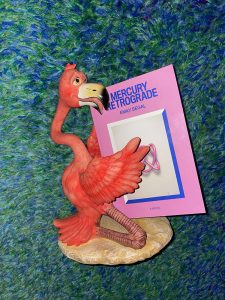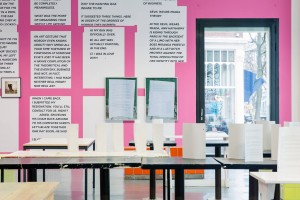Organized in part by artist-run collective and gallery Guccivuitton for the Ideas program at ICA Miami, Los Angeles-based artist Dena Yago and New York-based artist Sean Monahan of trend forecasting group K-HOLE (also with Greg Fong, Chris Sherron, and Emily Segal) were recently in residence at the institution to develop new market research using the city as a case study, as part of ‘A Report on Doubt’ launching on August 18
Presenting a preview of their research on August 8 in an interactive workshop, Yago and Monahan sit comfortably in ICA Miami’s well lit project space. The walls are bare, save for a giant flatscreen TV that hangs between the artists to supplement their talk with slides. The room is full and quiet as they begin with a brief overview of K-HOLE’s past body of work: the group typically creates neologisms for their case studies, presented as trend forecasting reports that are freely accessible to the public. They’re responsible for the infamous ‘normcore’ coinage, which first appeared in their 2013 report ‘Youth Mode: A Report on Freedom’ but became popular online as ‘#normcore’ the following year. It even made it into the Oxford Dictionary’s 2014 list of new words and came runner-up to ‘vape’ for Word of the Year.
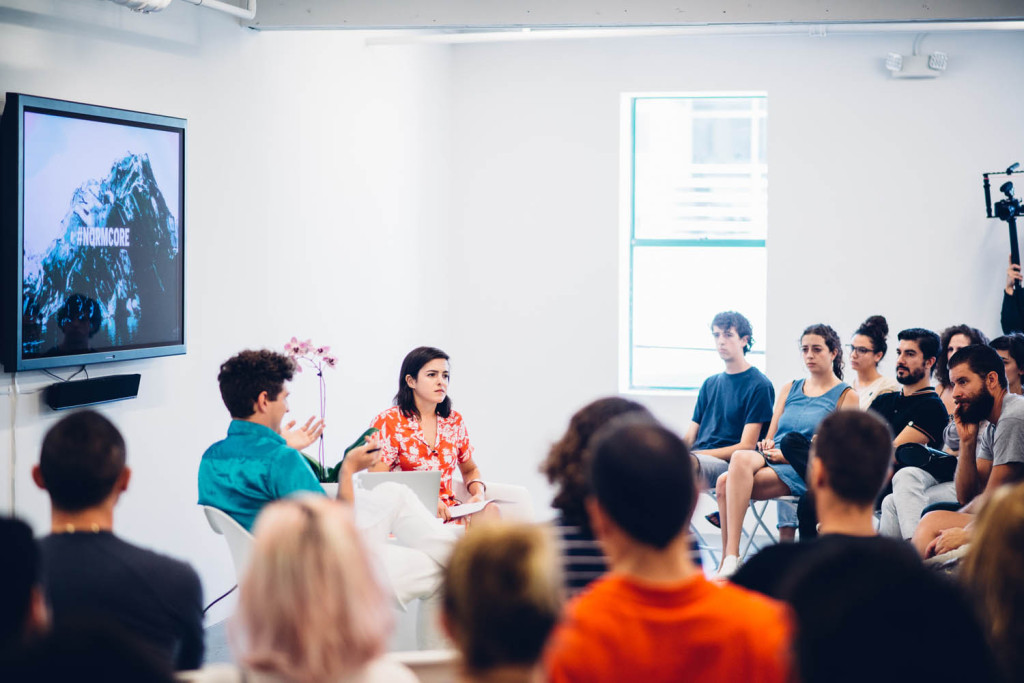
Yago and Monahan begin by describing normcore as being less a fad and more a philosophical idea. It was never meant in terms of fashion –as it’s now largely known for –but rather what they call “privileging communication over exercises of individuality”, regardless of what one’s wearing. Instead, according to the artists, the general public and journalists destroyed its “blurry, complicated utopian idea”, by reducing the report’s idea of normcore as a fluid community to simply that of ‘acting basic’ –another term in the same report that denotes a trend for dressing blandly as a statement about not making one.
Though Yago and Monahan appear disappointed with the phenomenon that followed their ‘Youth Mode’ report, one could argue that its misinterpretation attests to its success. After all, it is a trend forecasting report. Conventionally, these reports are made privately for companies in order to capitalize on consumer patterns at opportune moments by making new products based on what is observed. When the reports are made readily available to all, as K-HOLE does, the opportunity to capitalize is given to all, which is essentially what happened. #normcore, as well as ‘acting basic’, has generated a lot of content online and in the market, but as a mutation. Hence, the group’s impetus for their new report –and conversation –coming from the mass misunderstanding of the term, which drew their attention to what they call “language and the ambiguity of online speak”.
While research is still in development, K-HOLE present new terms at ICA Miami to potentially be included in their latest report, such as ‘consensus collapse’ and ‘unimpeachable language’ –where terms anxiously change meaning, making it easy to withstand any potential arguments against them. They also describe subjective and intimate language used as a mask over the language of infrastructures and technologies with ‘weaponized subjectivity’.
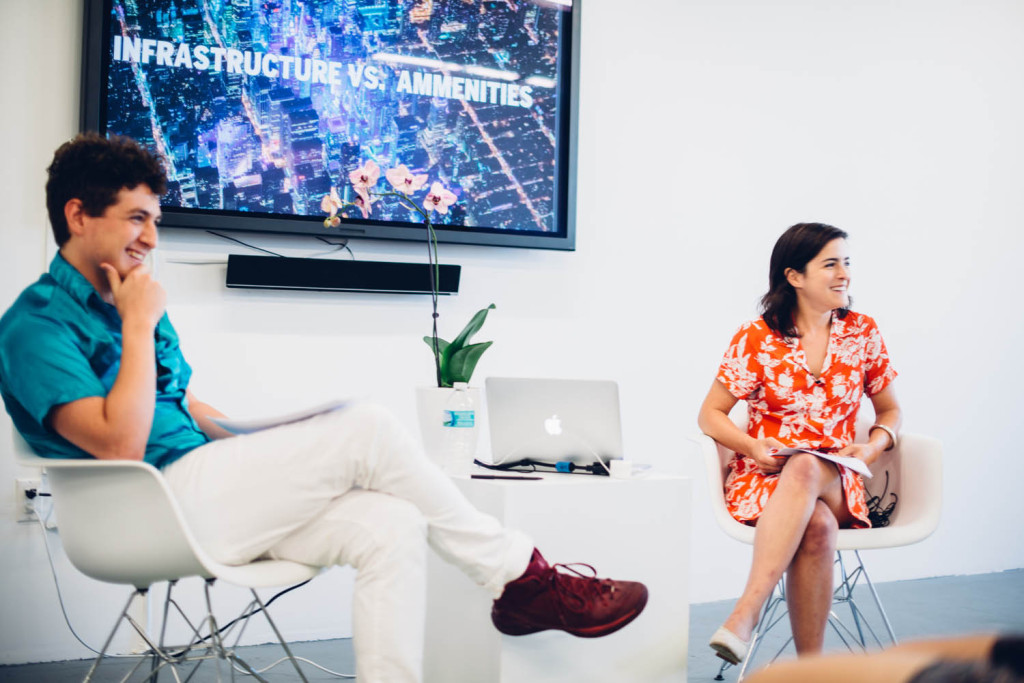
During their brief two-day residency, Yago and Monahan tried to find consumer patterns in Miami for ‘lifestyle burnout’ and ‘survivalist cosplay’, the two main ideas to be included in the report, which focuses on magic. Lifestyle burnout is described as “always being on” and “not having any differentiation between work and play” but seeking to retreat or escape, very literally, when one reaches a severe point of consumer exhaustion. Survivalist cosplay is described as short term extreme consumer experiences, usually concerned with the resilience of the body and its capabilities to survive an apocalypse, if need be. It is situation and reaction, while lifestyle burnout deals in sustainability and duration; a desire to stop being a consumer and its associated feelings of guilt. Survivalist cosplay is being continually absorbed by and embraces the consumer sphere.
Yago and Monahan admit to not having enough time to fully understand the complexities of the city of Miami their short time there. They acknowledge the obvious associations people have with it; that they didn’t really manage to reach a better understanding of what life is actually like for the people living there. The city is mostly known as a city for tourists, of indulgence, superficiality, debauchery and little else. While citing Miami as having one of the highest income inequalities than any other US city, and describing it as “unabashedly consumerist and superficial, that freaks out other Americans”, they still opt to research locations, such as Barry’s Bootcamp and Vitasquad, that perpetuate those preconceptions.
Barry’s Bootcamp is marketed as the best workout in the world. It is a combination of cardio and weightlifting done in a dark room to EDM with a militarized aesthetic. Though it’s a company founded in West Hollywood with branches around the world –including New York and London –Barry’s Bootcamp is presented as if it’s representative of Miami specifically, describing the bodies of the city as being “very different” and “less spiritual or yogic” than those in New York or Los Angeles. In fact, most of Yago and Monahan’s observations are made in comparison to these two cities. According to their presentation, people in Miami approach physical fitness as if it were a contest more than a health practice, grouping it under their ‘survivalist cosplay’ heading. They give no examples of how people in Miami are less spiritual and more competitive about their exercise routine than those in other cities, nor do they mention speaking to anyone in the workout classes they attend.
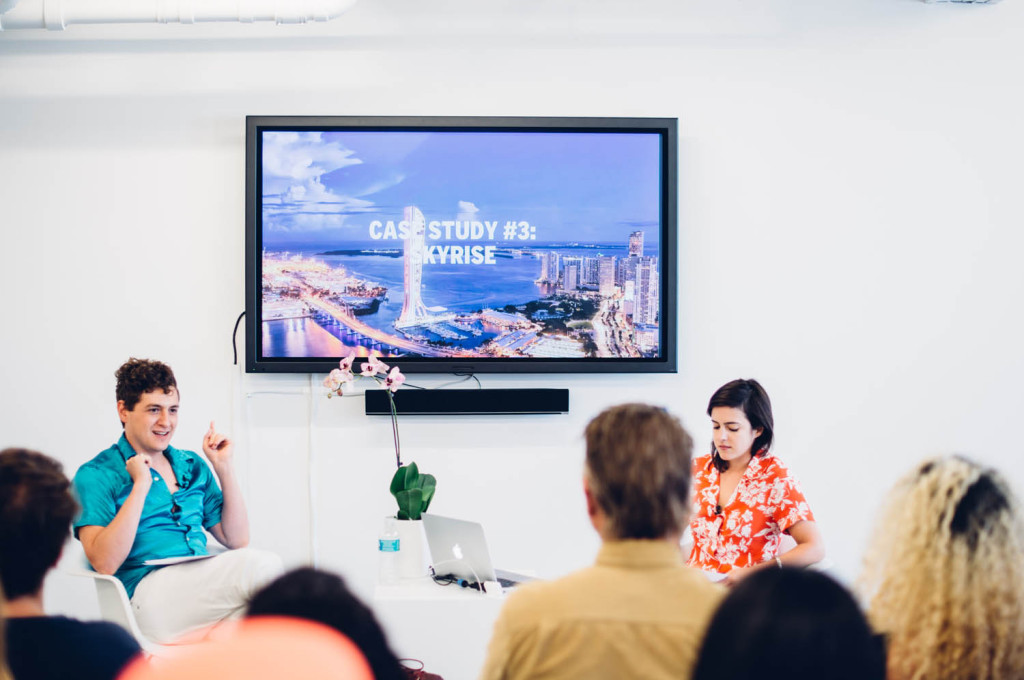
It seems impractical to want to find spirituality in a health practice such as Barry’s Bootcamp, as it isn’t based on a spiritual tradition and is specifically marketed as a tough militaristic challenge, attracting specific types of people with specific interests and goals. Similarly, Vitasquad, a service that provides intravenous nutrients for dehydration and is commonly used as a hangover cure, attracts people who like to drink and party. Businesses like Vitasquad also exist in New York and Los Angeles.
Considering that K-HOLE are working on a report on the subject of magic, it’s disappointing that they stick with what they already know. That being Miami’s superficial veneer, mostly centering around what South Beach has to offer, while overlooking the widespread practice of Santeria and vodou spiritual practices in the area. In light of the this limited approach to researching consumer trends, it might put the apparent misappropriation of normcore, as a too-generalized term for being ‘basic’, into perspective. **



